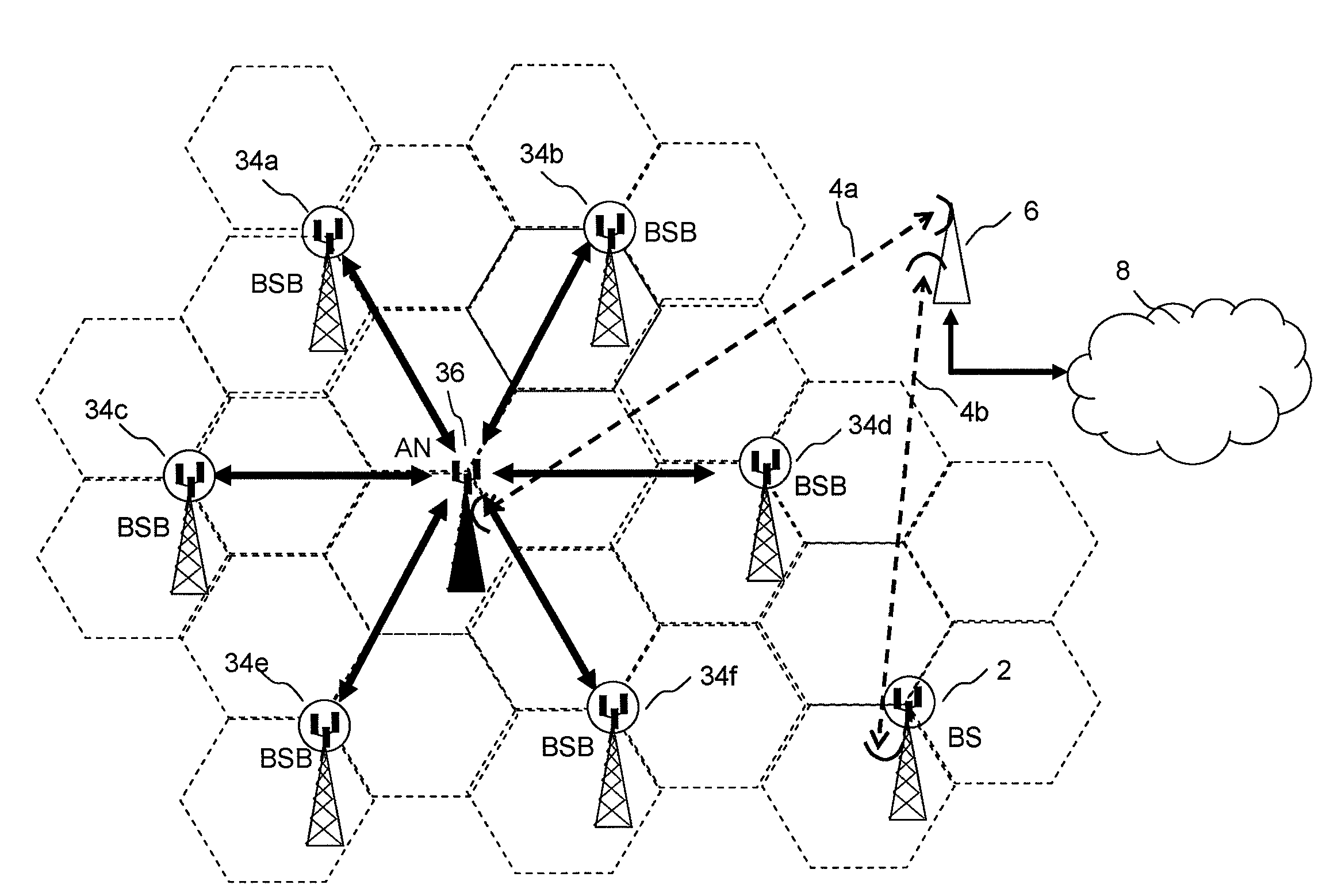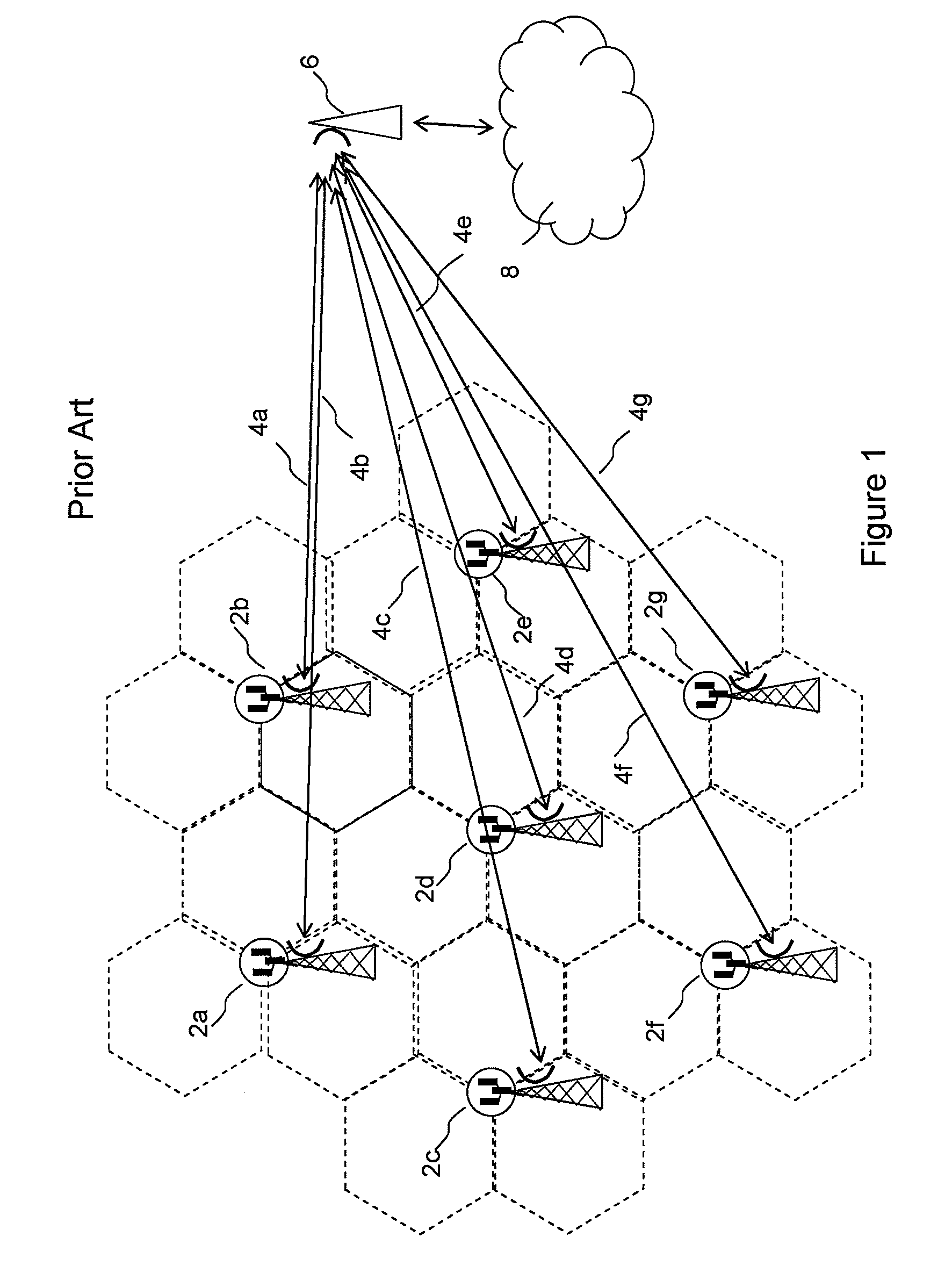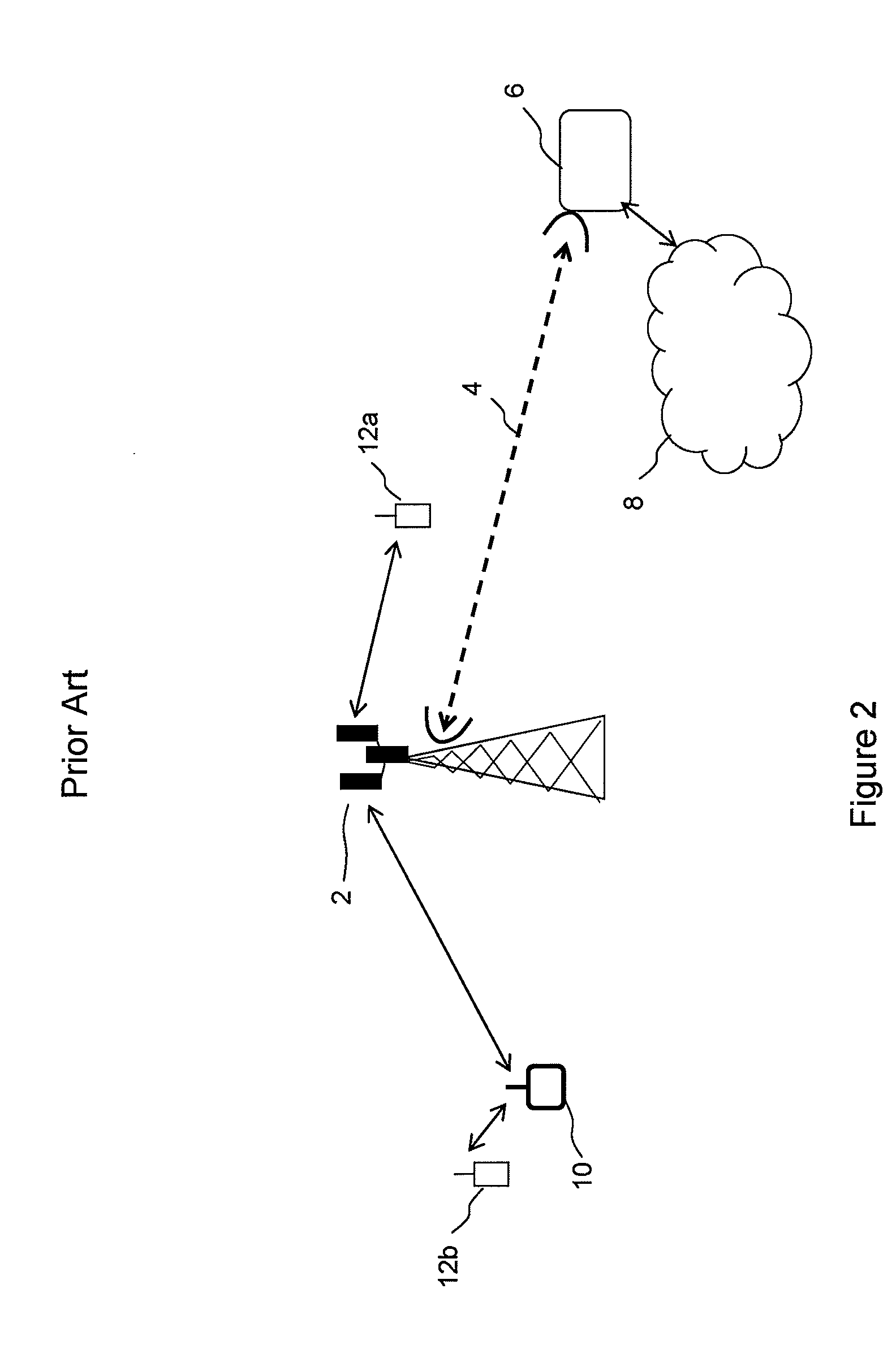Shared Radio Backhaul System
a radio backhaul and radio backhaul technology, applied in the field of wireless communications networks, can solve the problems of high cost of backhaul methods, increased operating expenses associated with adopting multiple leased lines, and increased costs of backhaul methods
- Summary
- Abstract
- Description
- Claims
- Application Information
AI Technical Summary
Benefits of technology
Problems solved by technology
Method used
Image
Examples
Embodiment Construction
[0046]In general, the present invention is directed to methods and apparatus that provide backhaul by using the cellular wireless resource within a cellular wireless system. For clarity, the methods and apparatus are described in the context of a high speed packet data system such as IEEE802.16 (WiMax) or LTE, but it will be appreciated that this is by way of example and that the methods and apparatus described are not limited to these examples.
[0047]FIG. 5b shows a frame structure according to a first embodiment of the invention, and FIG. 6 illustrates connections within a wireless network that are enabled by the frame structure of FIG. 5b. FIG. 6 shows a base station 36 known as an aggregation node. This base station has a microwave backhaul link 4a to a microwave station 6 and thence to a telecommunications network 8 such as the PSTN. In this example, six base stations 34a . . . 34f known as base stations with backhaul (BSB) are connected to the aggregation node (AN) by means of ...
PUM
 Login to View More
Login to View More Abstract
Description
Claims
Application Information
 Login to View More
Login to View More - R&D
- Intellectual Property
- Life Sciences
- Materials
- Tech Scout
- Unparalleled Data Quality
- Higher Quality Content
- 60% Fewer Hallucinations
Browse by: Latest US Patents, China's latest patents, Technical Efficacy Thesaurus, Application Domain, Technology Topic, Popular Technical Reports.
© 2025 PatSnap. All rights reserved.Legal|Privacy policy|Modern Slavery Act Transparency Statement|Sitemap|About US| Contact US: help@patsnap.com



